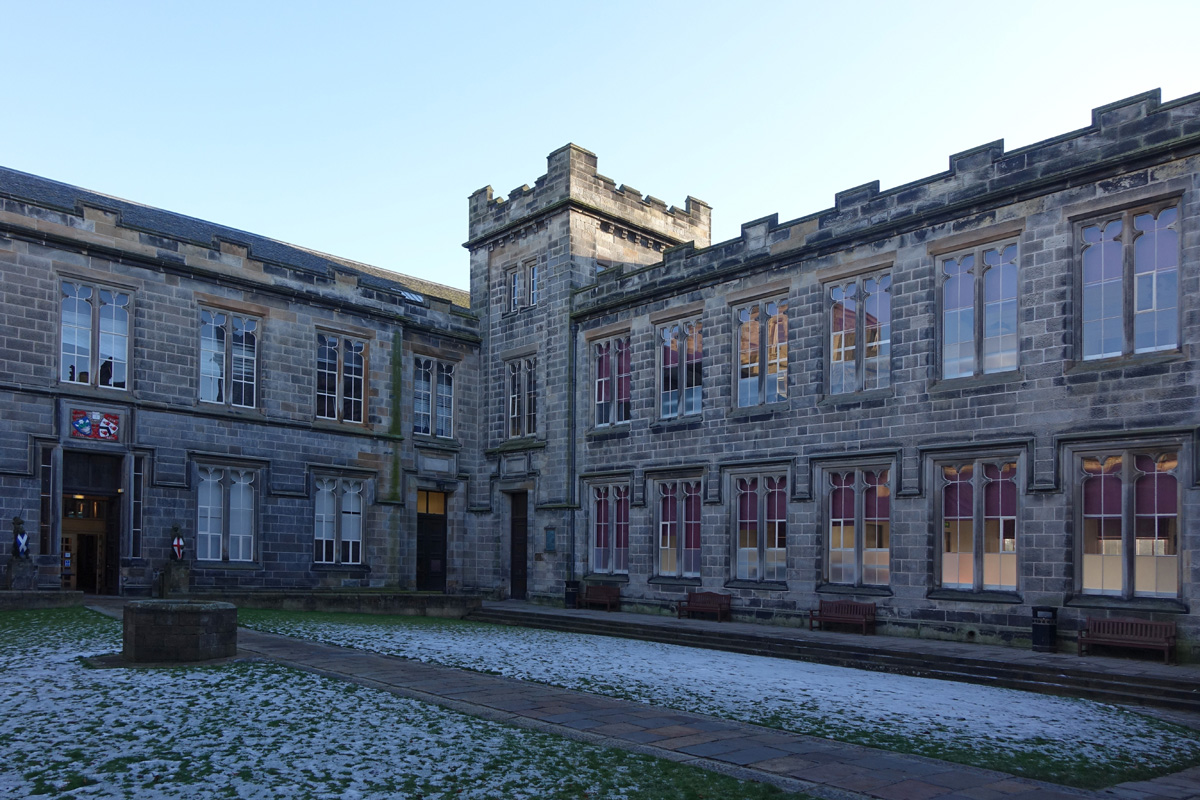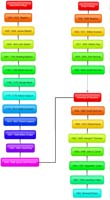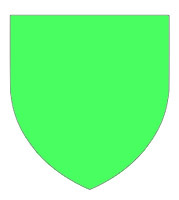The fusion of King's College and Marischal College |
 |
|
The prospective fusion of the two Universities in Aberdeen, King's College and Marischal College, created a sustained barrage of argument, pamphleteering, debate, press coverage and no doubt less well restrained rows over the period 1855 – 1860. Past graduates of the two Colleges felt strongly. Imagine the suggestion that Manchester should really have only one football team that could draw on the best players and, in addition, there would be no cause for rival fans to clash on the streets or in pubs. Ditto for Glasgow. That isn’t going to happen, but the fusion did, creating the University of Aberdeen. Technically its existence dates from 1st September 1860 but it was deemed 'to take rank among the Universities of Scotland as from the date of the erection of King's College and University'. If you look closely at the University's coat of arms that was devised then (see above), it is in four quarters merging four separate arms: bottom left, the 3 boars' heads of Elphinstone (founder of King's College), top right, the bars of Keith (the Earl Marischal), top left, pot with fish decoration and flowers, sun and open book of the burgh of Old Aberdeen and bottom right, a representation of the three towers of New Aberdeen's arms. The plan was for the Arts and Divinity Faculties to be located at King’s College while Law and Medicine would be at Marischal College. There would be only one professor for each of the Arts subjects, which included Natural Philosophy and Mathematics. Some 87 petitions were presented to the House of Commons in 1859 asking for the repeal of this part of the fusion arrangements but the Commons did not have the teeth against Royal edicts that had been present two centuries earlier. These and other appeals failed. In the event, not a lot of people were inconvenienced. This was partly because both Universities had remarkably few staff. As far as I know, there were no technical support staff, no secretarial staff and those in charge of each subject did not even have assistant lecturing staff. The staff running the academic aspects of the universities on a daily basis were the Professors, a sacrist, a librarian, a small number of post-graduate lecturers. At King's there was the post of 'economist'. The Professors did their own administration, looked after their own equipment and arranged their own exhibits and demonstrations, if appropriate. Teaching aids used were usually the personal property of the professors and lecturers. There were no resident staff or students requiring additional services. As it happened, most of the Marischal College staff were elderly so they bore the brunt of the compulsory retirements. However, they received a full-salary pension for life, a luxury that virtually no-one in society shared. The big loser was the young James Clerk Maxwell, not yet thirty years old. Maxwell secured a new chair at King’s College London before 1860 was out so it was really Aberdeen that was the big loser from his departure. It is ironic that a raft of new Professorships were created by the fusion. The Universities Act of 1858 that had legalised the fusion had instituted the University Court and General Council, essentially the same University structure operating now, over a century and a half later. The fusion would immediately create larger classes that would herald the need for additional staff, so Professors may have had the Universities to themselves before fusion but that would change For more on the Fusion and the next 100 years, see W. Douglas Simpson,"The Fusion of 1860", Aberdeen University Studies No. 146, Oliver & Boyd, Edinburgh, 1963. as the decades passed. |
| The buildings at King’s College were not large enough to take the combined cohort of Arts students and as a result between 1862 and 1865 the present ‘inoffensive’ (i.e. utilitarian) new buildings were erected on the South and East quarters of the quadrangle, the buildings one sees today. A rather nice library was added in 1870, the building that is now the University's reception hall and conference centre. David Thomson was located on the top floor of the Cromwell Tower, with the observatory above him. He had the very significant task of moving all of the natural philosophy demonstration apparatus from Marischal College to King's College, for Marischal had been by far the better equipped for natural philosophy. Mathematics was on the floor below him. The sparkling, almost new, granite building that Maxwell had enjoyed at Marischal College was lost to the natural philosophers, at least until the twentieth century. |
|
Page by John S. Reid Dec. 2017 |



